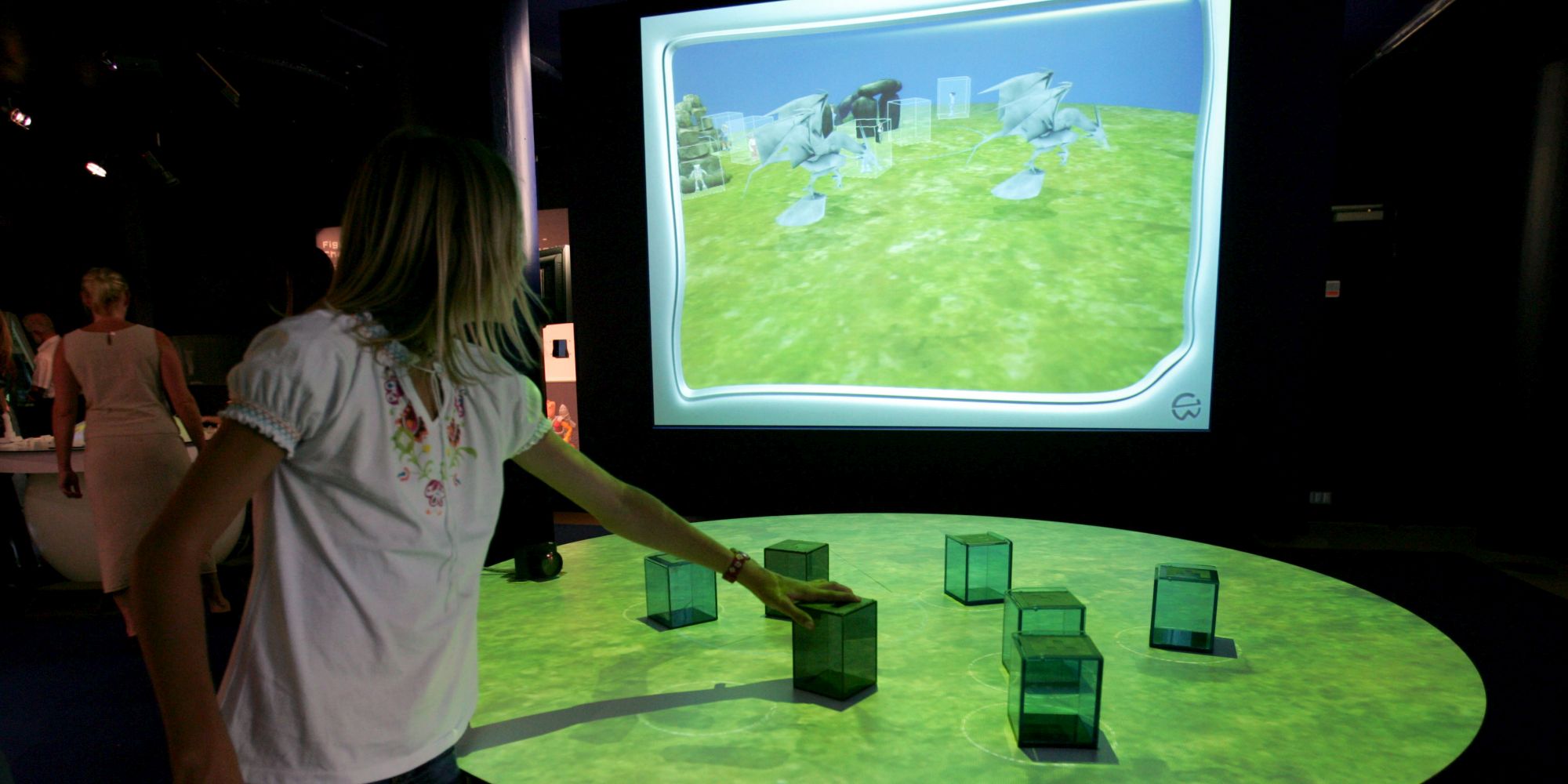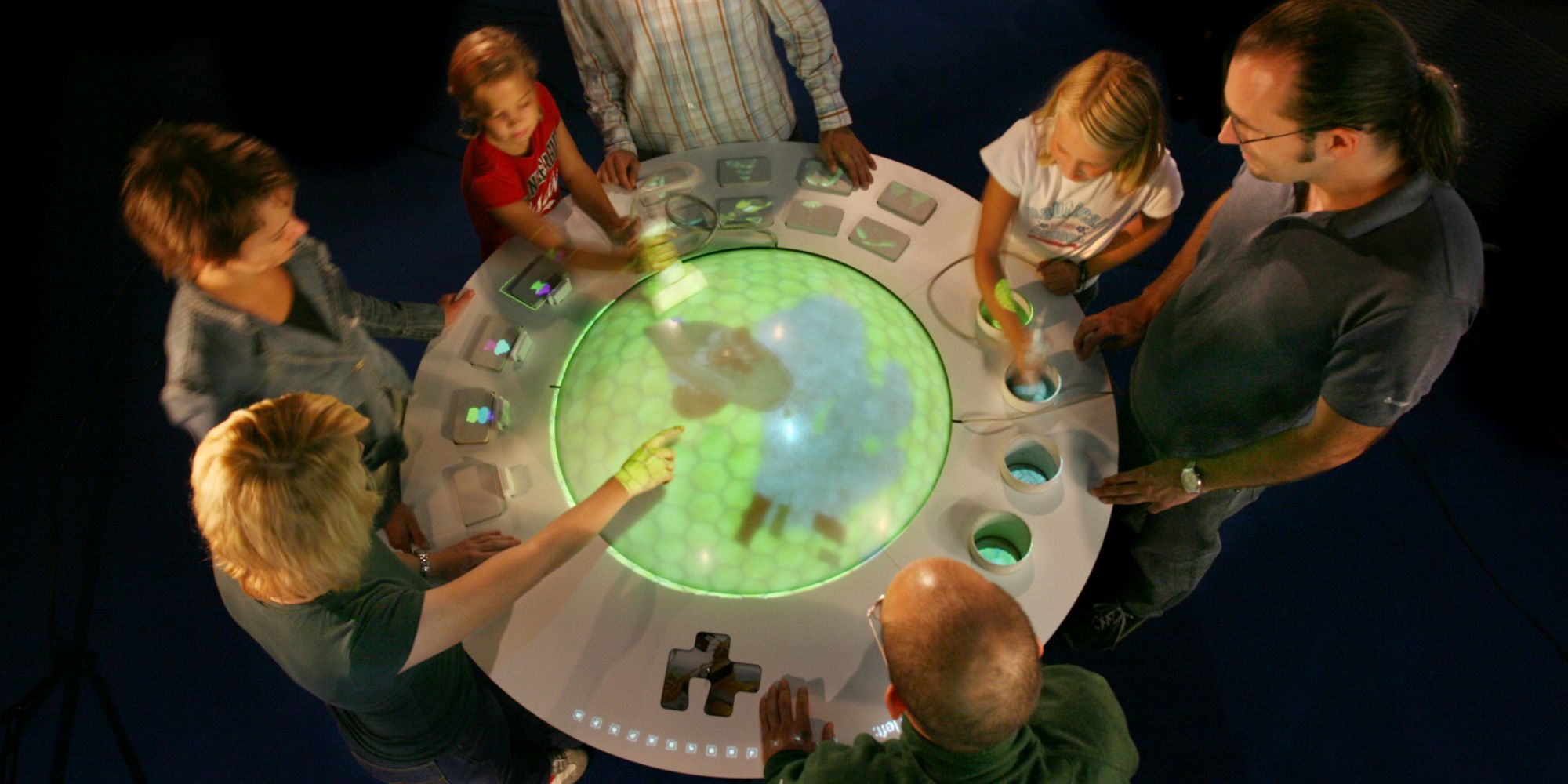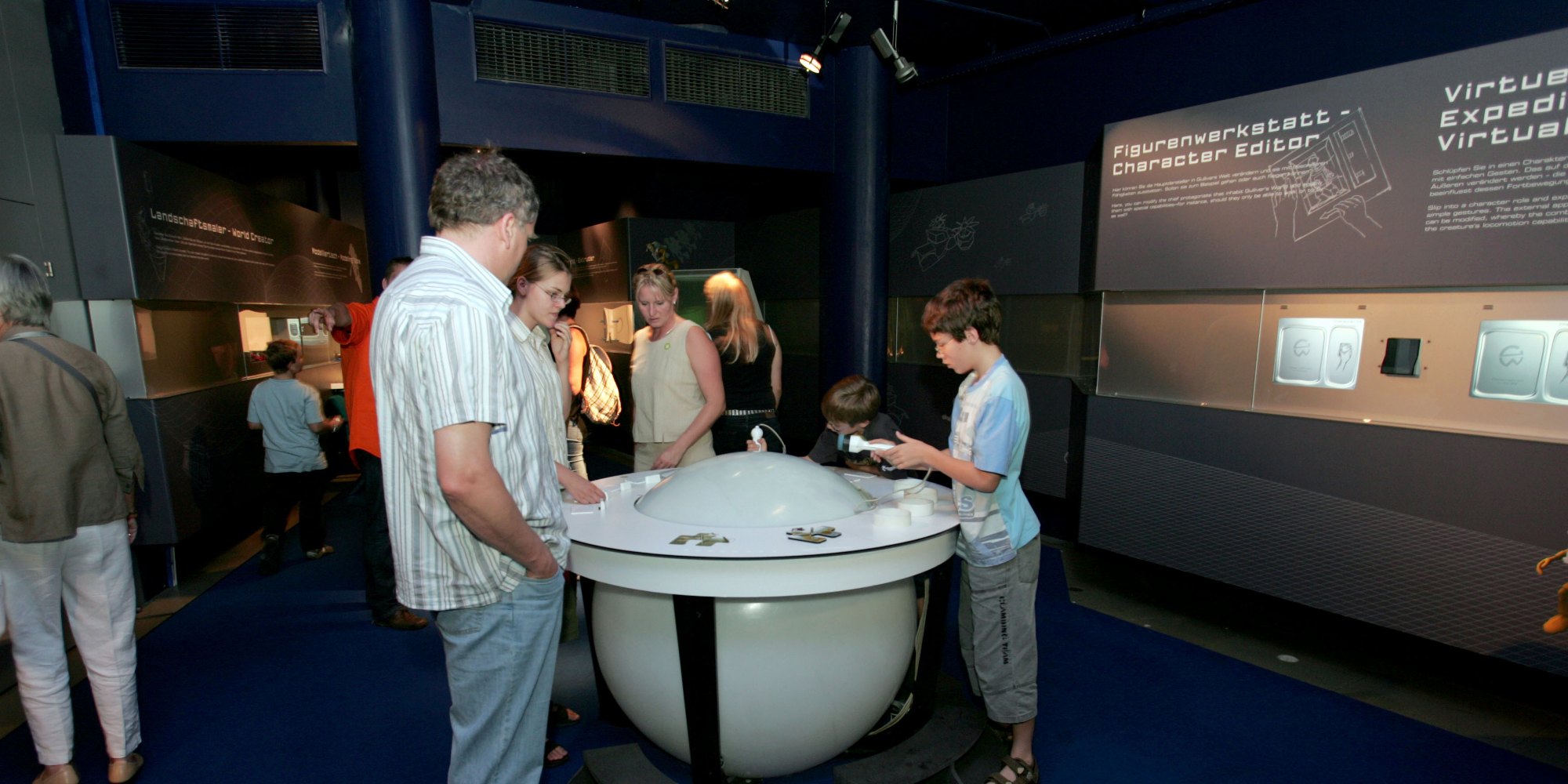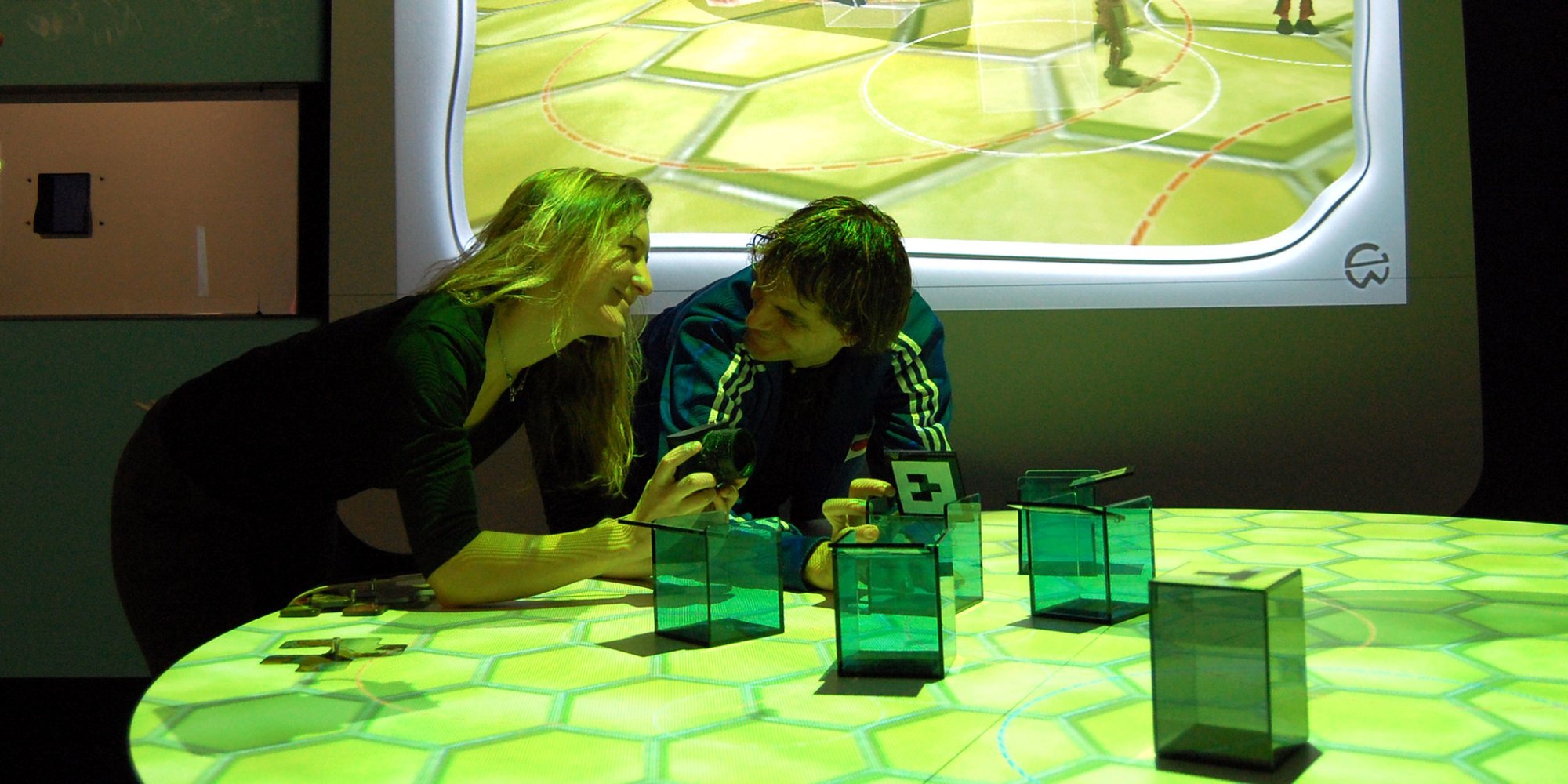



With the Gulliver’s Box exhibition in 2003, the Ars Electronica Futurelab gained the necessary experience and insights to further develop the follow-up project Gulliver’s World in several respects. The most important innovation in Gulliver’s World was that users no longer had to settle for prefabricated environments and action figures, but were invited to actively shape their artificial world and the characters that populate it. The installation visitor’s experience began with setting the parameters in a world editor that resembled a classic globe. Here, users could select terrain features and objects and freely position and distribute them across the surface of the “globe.” At a dedicated station, characters could be created and given unique attributes. In this way, users were able to act out sequences of events in their worlds, up to and including individual narratives and plots. The third station offered a 3D scanner, plasticine clay, and a tool that allowed users to virtually color their sculptures. Like Gulliver’s Box, the game level was set up on an empty round table on which the action figures could be moved using Magic Boxes. As they approached each other, the animated figures reacted individually to each other, as well as to the various conditions of the environment and objects created by the users*. The scenery was supplemented by video sequences that the users could create of themselves at a station set up specifically for this purpose, in order to then insert miniaturized versions of themselves into the virtual scenery.
In our Throwback series, we take a look back at past events, exhibitions, installations and other exciting happenings from the Ars Electronica universe since 1979.